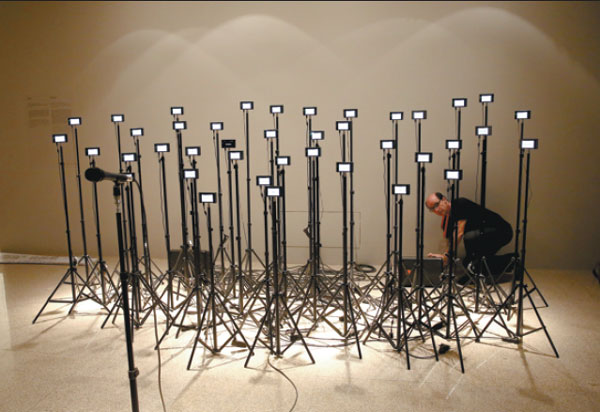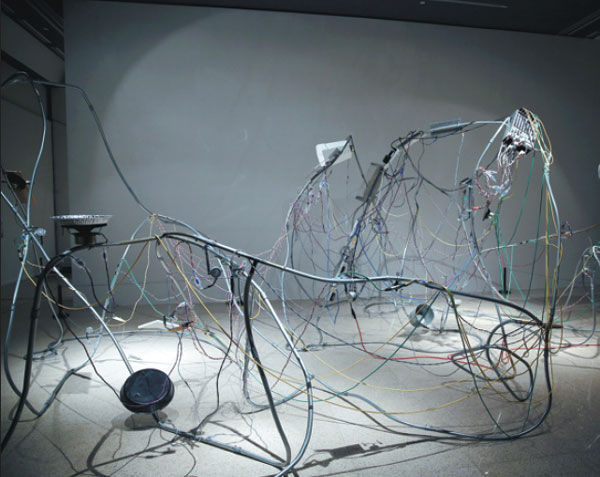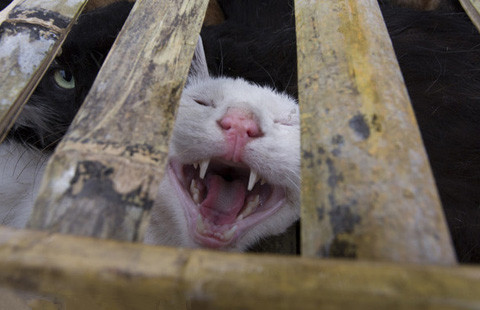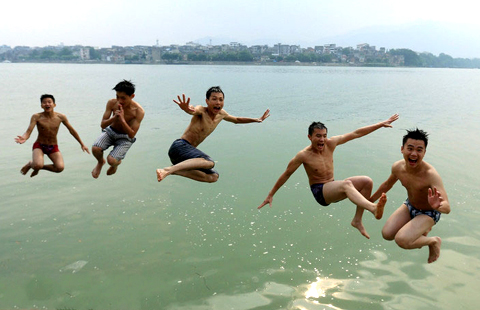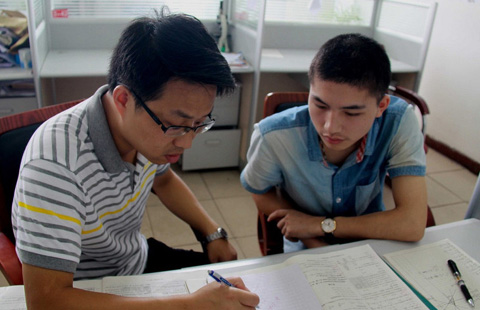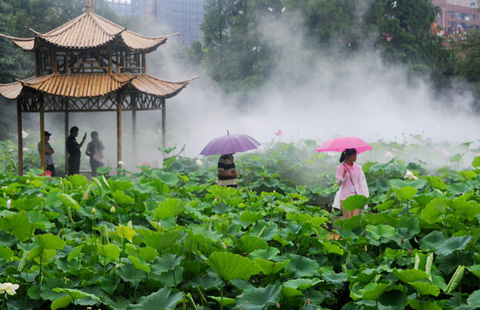Everyday objects transformed
Updated: 2014-07-01 07:39
By Lin Qi (China Daily USA)
|
|||||||||
If you weren't standing inside the National Art Museum of China in Beijing, you wouldn't be able to tell the difference between what you see here at an exhibition and an ordinary office building.
Most people would walk past, without a second glance at an installation that's a key draw at the ongoing Thing World, an experimental art exhibition until July 7.
Visitors might mistake the installation for a real office with desks, chairs, coffee mugs, computers and all other paraphernalia that you see at a workplace. Called Finance Department, the life-size replica of a real office is the work of Beijing-based artist Wang Yu-yang. This won Wang, 35, much attention at an Art Basel show in Miami Beach in the United States last December.
Art Basel serves as the world's premier stage to trade modern and contemporary art and holds annual shows in Basel in Switzerland, Hong Kong and Miami Beach.
At one of China's top national museums, Thing World seeks to explore the relationship between humans and objects, humans and technologies, and objects and technologies.
With Finance Department, Wang has replicated office infrastructure from a silica gel and installed motors in office items to make them function in a lively way. Wang gave the items what he describes as the ability to speak for themselves and "prove their existence".
The artist says that he wants his piece to show the relationship between men and objects in reverse. People are not spectators but find themselves surrounded and watched by an office of things "alive".
Thing World presents 58 pieces and sets of mixed media works which have turned the museum's 11 exhibition halls into a playful, mystical and fantastic place. Artists from 22 countries have utilized mechanical devices, electronic components, computer programming and other digital technologies to create a world of "independent" objects.
Audiences may view some objects on display with familiarity but the idea is to get across information on physical or life sciences.
For example, in his installation Ascension, Austrian-born artist Erwin Redl seeks to show the influence of wind and gravity with the help of a "symphony and dance" of ping-pong balls.
He placed a ball in each of 30 vertical glass pipes. A fan at the bottom of each pipe helps the ball move to a certain height. When the ball falls back, it makes soft, kettledrum-like sounds. The sounds from inside the pipes together make an "orchestra".
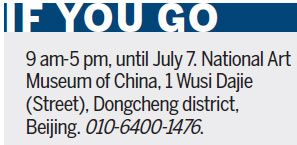
The theme Thing World literally means the world of things, while the Chinese title, Qi Wu Deng Guan means "all things are equal", according to Zhang Ga, the exhibition's curator and a professor with the Academy of Arts and Design at the Beijing-based Tsinghua University.
He says the Chinese title bears "profound social and political meaning".
"We have tried to adapt Zhuangzi's (or Chuang Tzu) philosophy of qi wu lun (making all things equal) into a modern context. We want to enrich its connotations through a variety of examples, which provide the audience infinite possibilities to look at an object," Zhang says.
He says that although man has conquered parts of nature to build modern cities, it has become impossible today to neglect critical issues such as environmental degradation and social conflicts because of the neglect of nature.
The exhibition seeks to find potential solutions to bring harmony between people and objects, Zhang adds.
"It is based upon a utopian thought that if human beings could communicate with the physical world on an equal basis, inequity between races, nations and genders would not exist," he says.
"Maybe it is the unrealistic ideas behind such artworks that will influence society, even if silently."
Thing World also marks the third edition of the museum's International Triennial of New Media Art that was launched in 2008.
The museum is not dedicated to presenting how artists explore traditional mediums and forms such as ink art, oil painting and sculpture, according to Fan Di'an, the exhibition's director.
He says it is more important for the museum to introduce to viewers the frontiers of new medium of computer-generated art and promote it by establishing a mechanism of holding regular shows.
"In a time when art can gain strength from incorporating technologies, so that it can become more creative and inspiring and broaden people's visions."
Fan says the practice also concerns the orientation of Chinese contemporary art which, after nearly three decades of borrowing and imitating Western elements, is now looking to make its own mark.
linqi@chinadaily.com.cn
|
Speak is an interactive installation by Brazilian artists Rejane Cantoni and Leonardo Crescenti. Viewers can speak to a microphone to start a conversation with 40 smartphones. Photos by Jiang Dong / China Daily |
|
Canadian artist Jean-Pierre Gauthier connects various objects, such as plates, electric cables and speakers, to create a kinetic and sound installation called Rut. |
(China Daily USA 07/01/2014 page9)

 Chinese navy in Hawaii for joint exercise
Chinese navy in Hawaii for joint exercise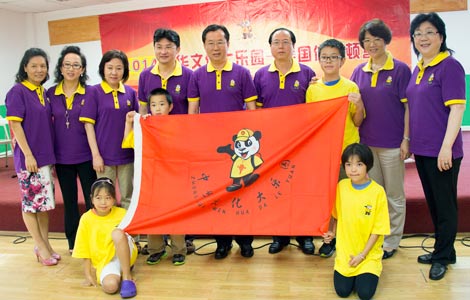
 Culture camp delivers authentic China
Culture camp delivers authentic China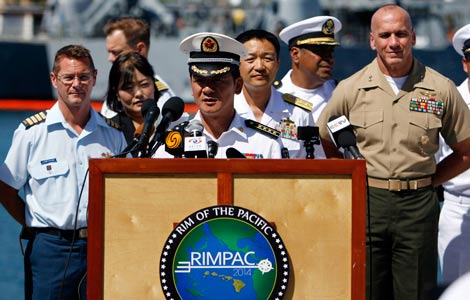
 RIMPAC press conference holds in Hawaii
RIMPAC press conference holds in Hawaii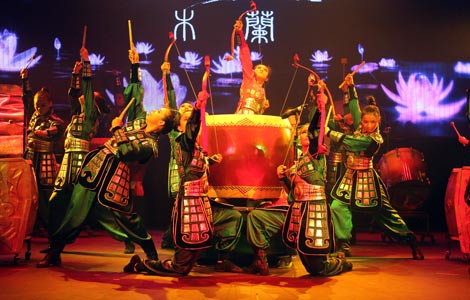
 Mulan returns to New York City
Mulan returns to New York City
 US admiral tours Chinese warship
US admiral tours Chinese warship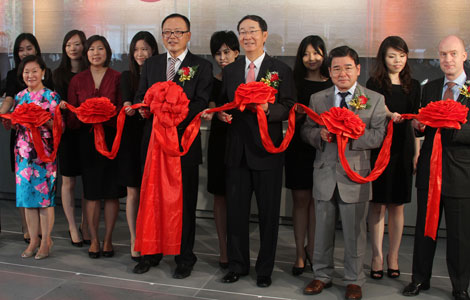
 Bank of China opens branch in Queens
Bank of China opens branch in Queens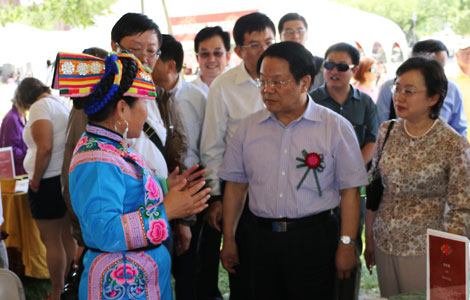
 Minister: Culture the strongest bond linking China, US
Minister: Culture the strongest bond linking China, US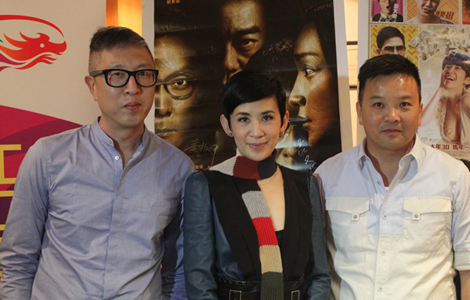
 Asian Film Festival gets underway with Overheard 3
Asian Film Festival gets underway with Overheard 3
Most Viewed
Editor's Picks

|

|

|

|

|
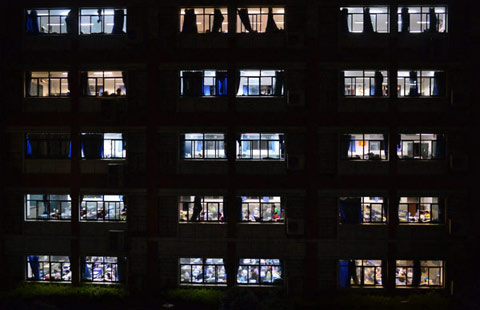
|
Today's Top News
US sends 300 more troops to Iraq over security concerns
US business-jet company awaits green light to operate in China
Bensonhurst becomes Brooklyn's second Chinatown
Bank of China New York opens Queens branch
Former military leader expelled from CPC
China to increase personnel for peace
China, US pact to curb offshore tax evasion
Transformers 4 breaks records in China
US Weekly

|

|
